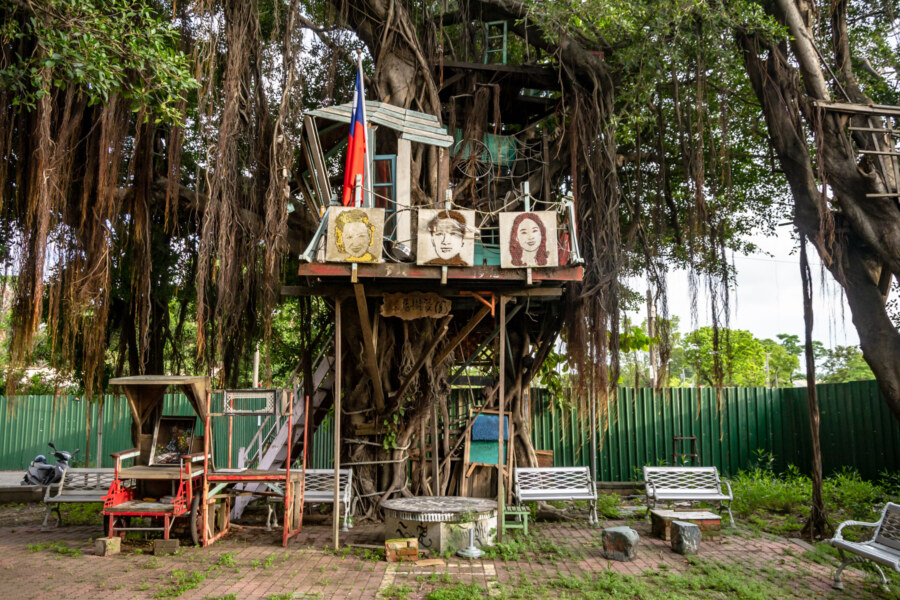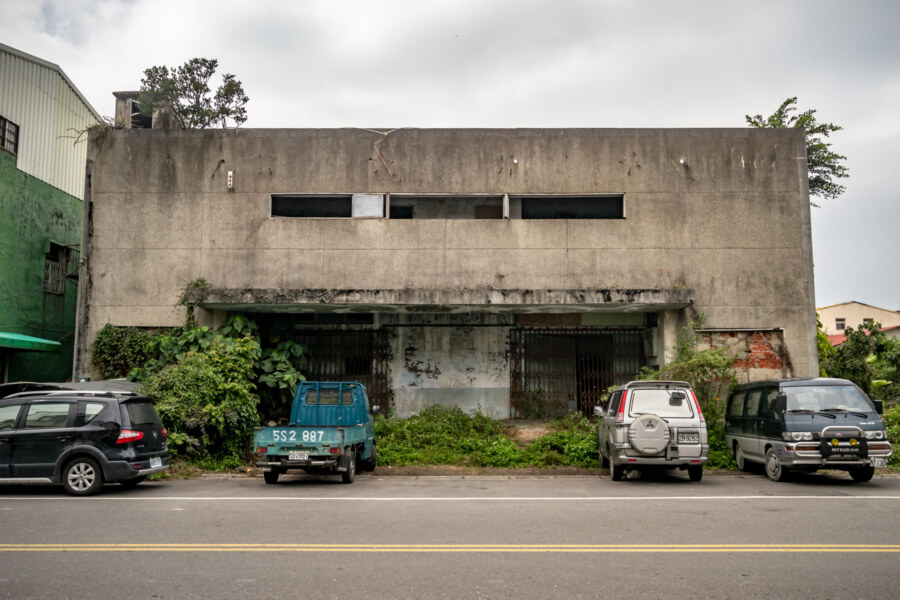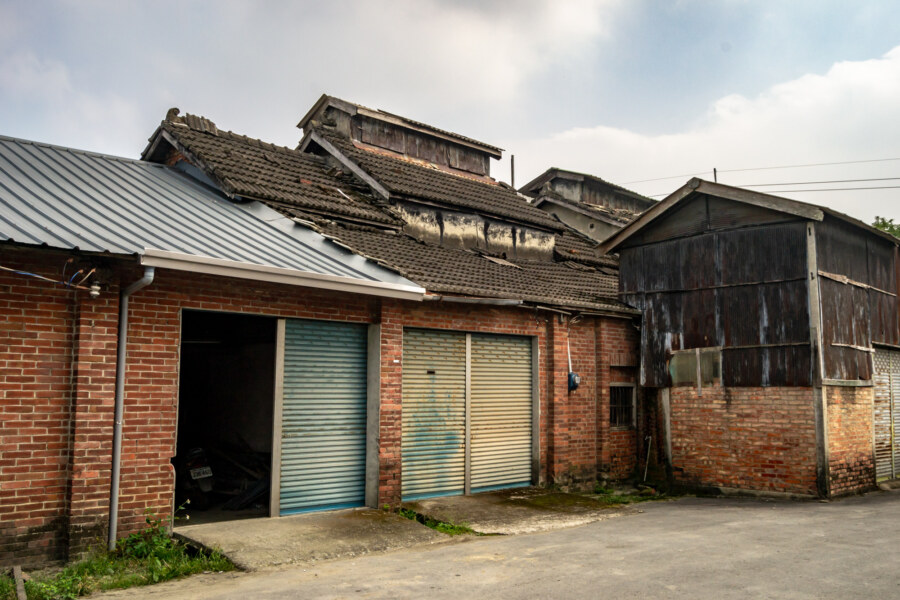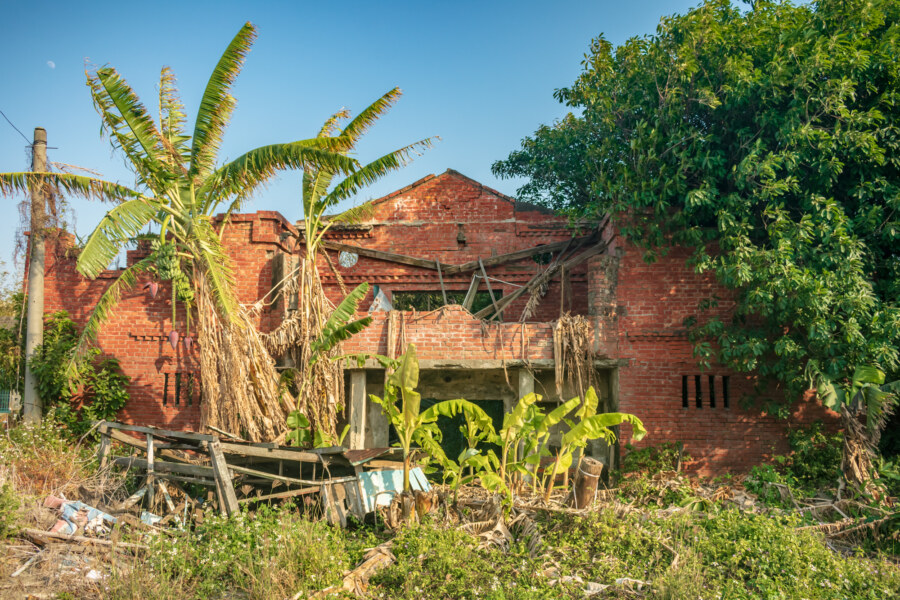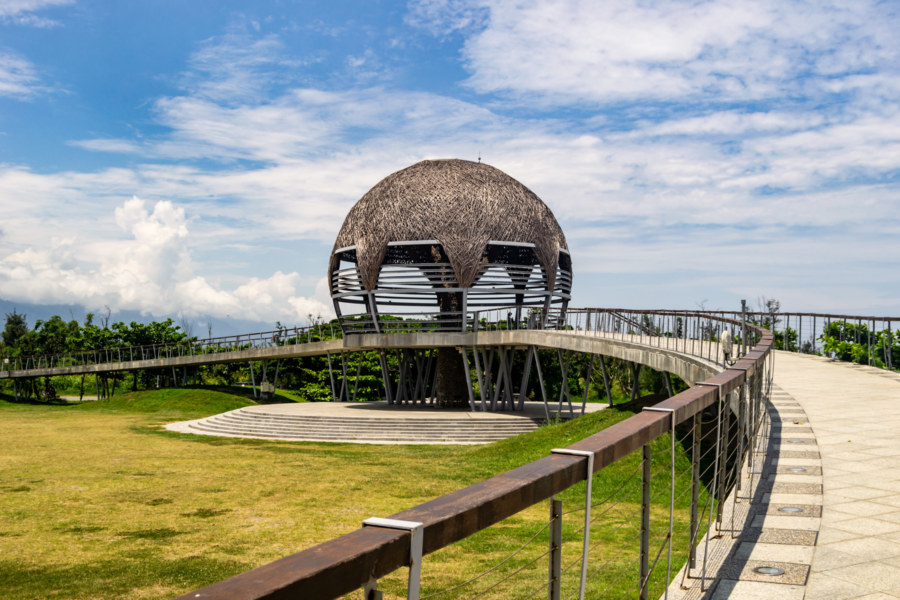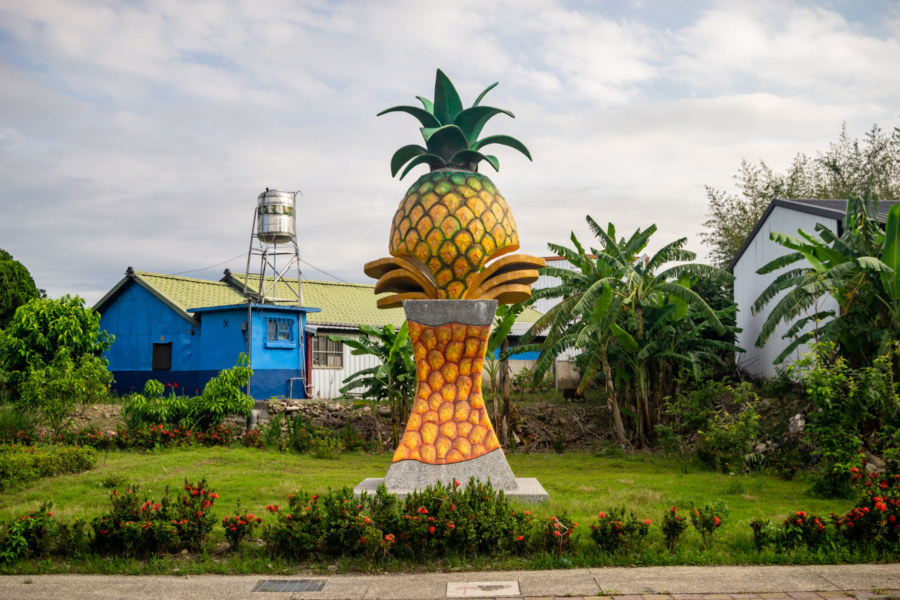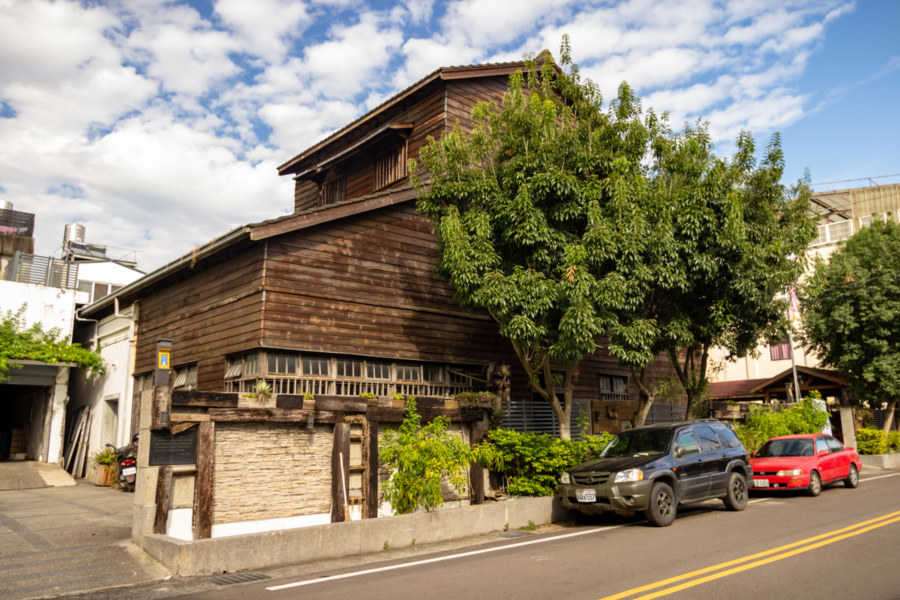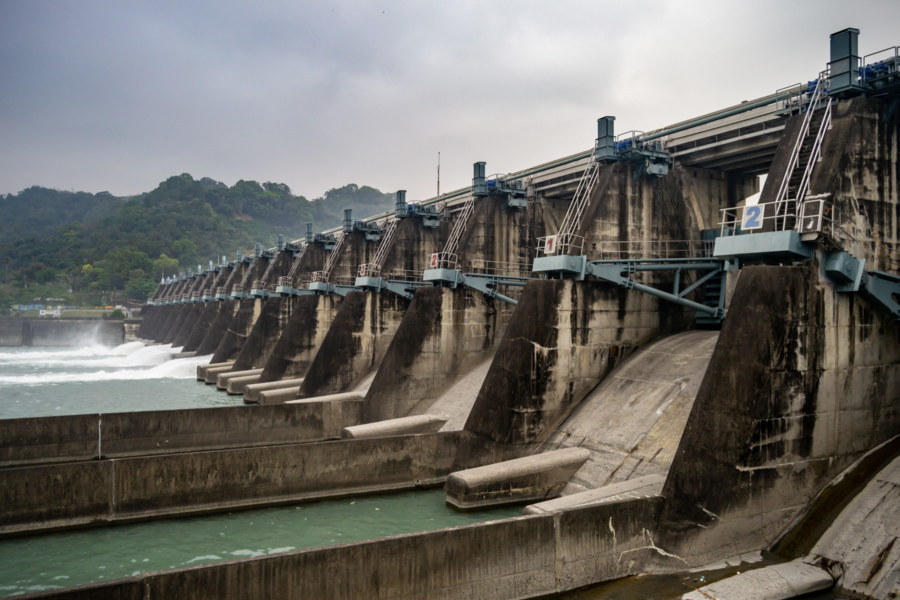The Second Air Force New Village (二空新村) is a former military dependents’ village in Tainan, Taiwan. It was established east of Tainan Airbase in 1950, primarily for members of the Republic of China Air Force and their families, and it eventually grew to become the sixth most populous of the official military villages in Taiwan. From 1950 into the 1960s several waves of construction and development increased the village to nearly 1,000 households, with a sizable number of unregistered structures scattered around the periphery. As with most other military villages this one was steadily dismantled and demolished over the course of many years in the late 2000s and early 2010s, part of a nationwide urban renewal program that relocated the remaining residents into more modern apartment blocks.
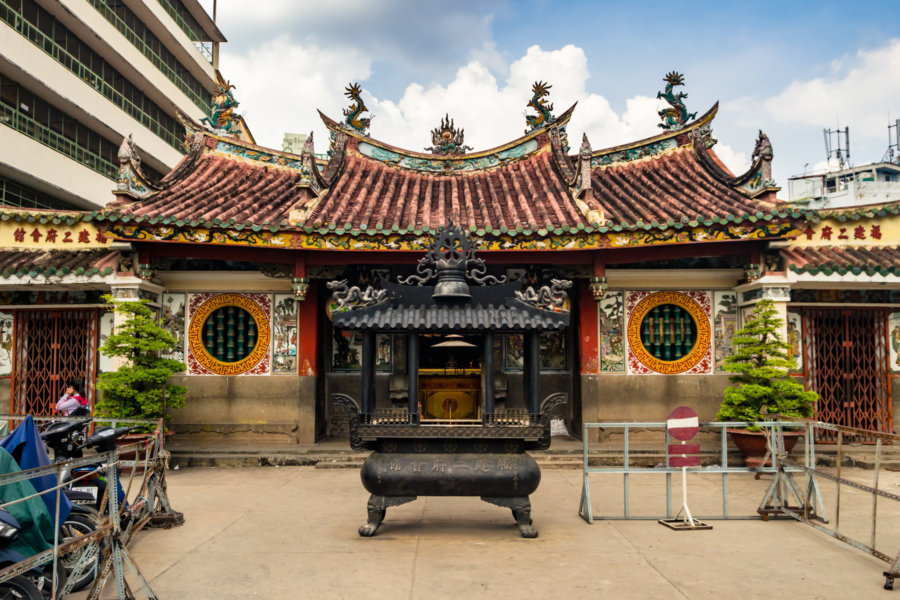
Posts with a historical angle, situating content in time and space. Here we go deeper into the past…
Nanxi Huazhou Theater 楠西華洲戲院
Huázhōu Theater (華洲戲院) is a long-abandoned cinema located in Nanxi, a rural district nestled in the low hills of eastern Tainan, Taiwan. Easily reached via Provincial Highway 3, the main settlement in Nanxi is situated along the middle reaches of Tsengwen River, the fourth longest in the country. Nanxi, like most other parts of rural Taiwan, has suffered an almost continuous population outflow for decades, with household registration numbers almost halving from around 14,000 in 1981 to merely 8,000 in 2023. With so many people departing in search of opportunity in bigger cities we are left to wonder, what inspired the construction of such a large theater in this downtrodden town?
Postcards From Linnei 林內明信片
Linnei is a small rural township located on the south side of the Zhuoshui River in northeastern Yunlin, Taiwan. Despite its strategic position on the Western Trunk Line this township remains mostly pastoral and undeveloped, with little industrial activity compared to neighboring Douliu, the administrative seat of the county. Population in the township peaked at nearly 23,000 in the 1970s and has been declining ever since, recently falling below 18,000 as rural flight continues apace. Nowadays the local economy mostly revolves around agricultural products such as rice, bamboo, and tea, but Linnei was once a major center of tobacco cultivation, traces of which can be found scattered across the countryside.
Kouhu Theater 口湖戲院
The overgrown ruins of Kǒuhú Theater (口湖戲院) can be found along a dusty country road on the outskirts of Kouhu, a desolate town in coastal Yunlin, at the westernmost extent of the Taiwanese mainland. Its most distinct feature is the exposed red brick facade, which might be unique among those vintage theaters still standing in earthquake-prone Taiwan. Not much is written about this old theater online, possibly due to its obscure location in the remote countryside, but it dates back to the early 1950s and likely remained in operation into the early 1980s.
Huadong Valley Ride 2018: Taitung City
This entry documents my final day of riding on a bicycle trip down the Huadong Valley in 2018. I began with a short yet eventful spin around Taitung City, the administrative capital of Taitung, and headed southwest across the alluvial plains before curving back to catch a train bound for Taipei in the afternoon. I already introduced the history, geography, and culture of Taitung City in this post from a previous visit in 2015, so I’ll focus on specific sites I visited on this particular trip.
Huadong Valley Ride 2018: Guanshan to Taitung City
My fifth day of riding the Huadong Valley in 2018 began in Guanshan and ended in Taitung City, approximately 45 kilometers further south. Although there were several uphill segments this was one of the least demanding rides of the entire trip, partly because I had a good night’s rest, but also due to some cloud cover moderating the influence of the tropical sun. After rising I cycled over to Little Star Breakfast shop (小星星早餐店) to try their fluffy handmade dànbǐng 蛋餅 (a crepe-like egg roll with various fillings). Feeling recharged, I set out to catalog more of eastern Taiwan’s historical relics and natural wonders.
Shigang Rice Barn 石岡穀倉
Shigang Rice Barn 石岡穀倉, formally known as the Shigang Farmers’ Association Rice Milling Barn 石岡農會碾米穀倉, is one of the best preserved Japanese colonial era rice barns in Taiwan. Constructed with locally-sourced timber in 1941, it was designed to be earthquake-resistant, benefitting from hard lessons learned from the 1923 Great Kantō Earthquake and the 1935 Hsinchu-Taichung Earthquake. It was in use for many decades before modernization of rice milling made it obsolete, presumably sometime in the 1980s or 1990s, leaving the building derelict and threatened with demolition.
Huadong Valley Ride 2018: Yuli to Guanshan
Day four of riding through the Huadong Valley of eastern Taiwan in 2018 began in Yuli, the midpoint of this bicycle trip from Hualien City to Taitung City. From the weather report I knew I’d have another challenging ride ahead—yet again the mercury was due to exceed 35 degrees. Luckily I was in no great rush, as I had allocated an entire week for a trip that experienced riders could easily manage in two days. I made good use of that extra time, making numerous stops and detours to document some of the many historic and cultural sites along the way, many of them quite obscure. I ended the day in Guanshan, slightly more than 40 kilometers down the valley.
Shigang Dam 石岡水壩
Shigang Dam 石岡水壩 is a barrage dam on the lower reaches of the Dàjiǎ River 大甲溪 in Shigang, Taichung, Taiwan. It was constructed between 1974 and 1977, not long after the completion of the Techi Dam 德基水壩, a far more ambitious hydroelectric project further upstream. Intended mainly for flood control and irrigation purposes, it was heavily damaged in the devastating 921 Earthquake of 1999 and later repaired. Despite its diminished capacity, Shigang Dam continues to serve an important function in regional water distribution across Taichung.
Yuli Shinto Shrine 玉里神社
Yuli Shinto Shrine 玉里神社 is a Japanese colonial era historic site in Yuli, the largest town in the middle of the Huādōng Valley 花東縱谷 of eastern Taiwan. Formally known as Yuli Shrine 玉里社 (Tamasato-sha in the original Japanese), it was constructed in 1928, the third year of the Shōwa era. The vast majority of Taiwan’s several hundred Shinto shrines were destroyed in the decades following the Japanese withdrawal—but enough of this shrine remained to justify its official designation as a cultural asset in 2008. Since then some effort has been undertaken to restore the site, which occupies a hilltop at the western edge of town, and it now ranks among the most well-preserved in the remote eastern part of the country.
